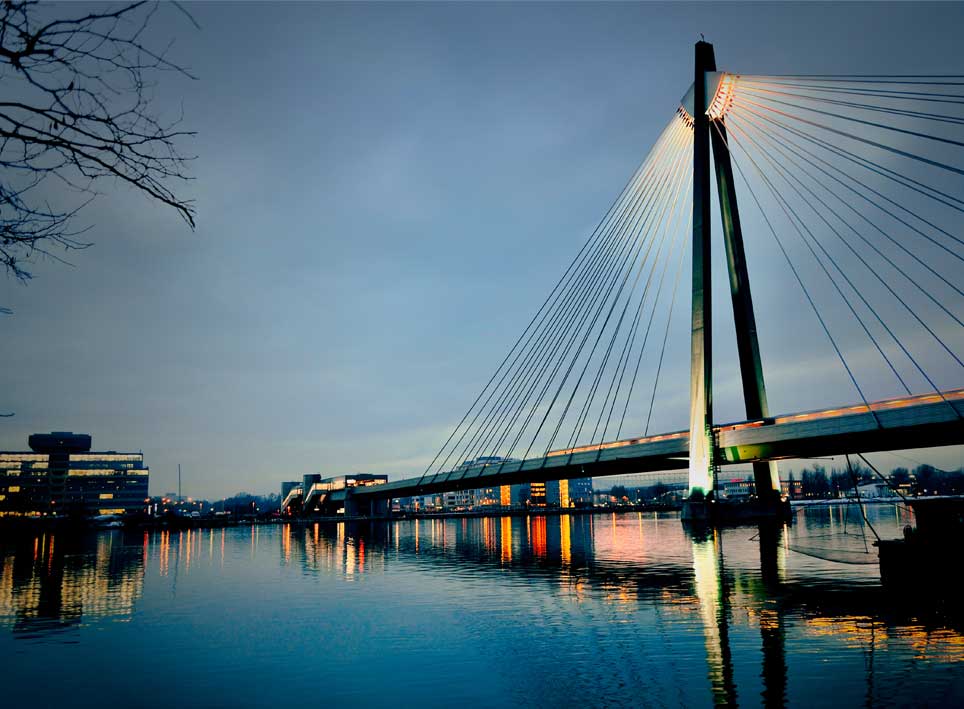Designing and building a pedestrian bridge is a complex task that calls for a precise blend of engineering acumen, architectural creativity, and consideration for the end-users. In this era of rapid urban development, the focus on pedestrian-friendly areas is greater than ever. A well-executed steel pedestrian bridge design and build can add aesthetic value to a city and improve its walkability and connectivity. This article explores the critical factors to consider for such a project.

1. Width determination: More than just pedestrians
Determining the bridge’s width is one of the first steps in the steel pedestrian bridge design and build process. While the primary purpose is facilitating pedestrian movement, designers must also consider other potential users. Cyclists, maintenance vehicles, and even emergency services may need to access the bridge, which can significantly impact its required width.
The standards related to the design of the pedestrian bridges such as BS EN Standards or AASHTO LRFD Guide Specifications provide guidelines based on the expected load and the bridge’s “clear width.” For instance, a bridge must be engineered to support live loads that include pedestrians or cyclists (at approximately 500 kilograms per square meter), maintenance trucks (as per client requirements, usually in the range of 6 – 10 tons) or emergency services vehicles (often around 35 tons). These calculations guide decisions on materials, foundation depth, and load distribution to guarantee the bridge can withstand these diverse loads, ensuring both safety and structural integrity for years to come.
2. Site conditions: Adapt and overcome
Every bridge construction project has unique site conditions that can dramatically influence the design and building process. For bridges spanning over water bodies, special attention must be given to water flow patterns, potential flooding risks, and local environmental laws.
The need for special considerations for water crossings cannot be overstated. Whether your bridge spans a gentle stream or a bustling river, you must account for dynamic loads, the possibility of debris impact, and scouring effects around the bridge supports. Advanced simulation tools can help predict these factors accurately, ensuring that the bridge remains functional and safe in varying conditions.
In regions with significant elevation changes, another design criterion comes into play. Guidelines need to be followed in regard to maximum slopes and grab rails, which must be incorporated into the design. Additionally, elevation changes can require more extensive foundation work, possibly involving piers or cable systems to support the structure effectively.
3. Material choice: The steel advantage
Steel is often the material of choice in pedestrian bridge design and build projects for various reasons, including its strength-to-weight ratio, durability, and ease of installation. The right steel can resist weather conditions, carry heavy loads, and last for decades with minimal maintenance. Moreover, steel bridges can be aesthetically pleasing, with the flexibility for various architectural styles. Modern computational techniques can optimize the usage of steel, ensuring sustainability and cost-effectiveness.
4. Aesthetics and Functionality: Striking the Balance
When embarking on a steel pedestrian bridge design and build, aesthetics and functionality must go hand in hand. A bridge is not just a practical structure; it’s also a piece of public art that can define the character of an area. Modern designs often incorporate lighting, seating, and small park-like settings to enhance the user experience.
However, aesthetics should never compromise functionality and safety. Utilitarian elements such as railings, non-slip surfaces, and proper signage should seamlessly integrate into the overall design. Attention to these details boosts the bridge’s visual appeal and enhances its usability and accessibility. CAD and simulation software allows designers to preview how these elements come together, ensuring a harmonious blend of form and function.
5. Cost Considerations: Budgeting for Longevity
Budgetary constraints are an inevitable part of any construction project. However, cutting corners can lead to significant long-term costs in the context of a steel pedestrian bridge design and build. Cheap materials may deteriorate quickly, requiring frequent repairs or even complete overhauls.
It’s essential to budget not just for the initial construction but for the lifecycle costs of the bridge. This includes maintenance, potential upgrades, and even eventual decommissioning. You can mitigate these future expenses by using durable, high-quality materials and innovative design techniques. Initial financial investment may be higher, but the payoff comes in a structure that stands the test of time.
6. Safety Measures: Designing for Unforeseen Circumstances
Public safety should be the cornerstone of any steel pedestrian bridge design and build project. This extends beyond choosing high-quality materials and includes design elements that can enhance safety. For example, adequate lighting is an aesthetic feature and a critical safety measure to prevent accidents during low-visibility conditions.
Other safety considerations include robust surveillance systems and emergency communication features. Incorporating these elements at the design stage can be more cost-effective than retrofitting them later. Safety measures like these are essential to protect the public and the organizations responsible for the bridge from potential legal challenges.
A well-designed and properly constructed pedestrian bridge not only enhances the connectivity and walkability of an area but also stands as a symbol of architectural ingenuity. It is a testament to the intersection of creativity and engineering precision, offering both utility and aesthetic value to the community it serves. However, safety remains paramount throughout the entire process. Prioritizing public safety through meticulous planning, the use of quality materials, and the incorporation of modern safety measures ensures that the bridge serves its purpose without compromise.